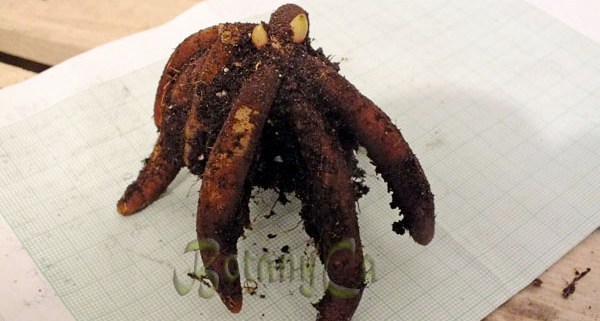What do they have in common? Nothing, only that both deterred me from finishing the article on transplanting Hepatica seedlings.
But I don’t want to waste the occasion on showing something about Roscoea scillifolia fo. atropurpurea while I still can. As soon as possible it will be planted in the garden; just couldn’t figure out a proper space for it last year.
Shown here – the way the rhizomes like to bury deep into the pot (the same happens in the ground) and the distinctive ‘whiskers’ around the apical buds of R. scillifolia fo. atropurpurea (a good ID character ;).

Roscoea scillifolia fo. atropurpurea rhizomes; notice how they went deep into the tall pot during growth. The pot was kept in the garage over the winter (no watering).
If you grew Roscoea from seeds and/or have 3-4 years old rhizomes, they can be planted in the ground in late spring. Please read again: Contractile roots- a journey to the centre of the earth where I mentioned why and when this is best done (in a cold climate).
*Keep in mind that most Roscoea are showing up late in the season and more than this, R. scillifolia fo. atropurpurea has small flowers, so it needs a proper location in order to enjoy it.

Roscoea scillifolia fo. atropurpurea flowering in the summer
** The slugs are active now and careful watching for damage signs can help in early detection to avoid further damage to the seedlings and plants. It takes time but worth doing it.











